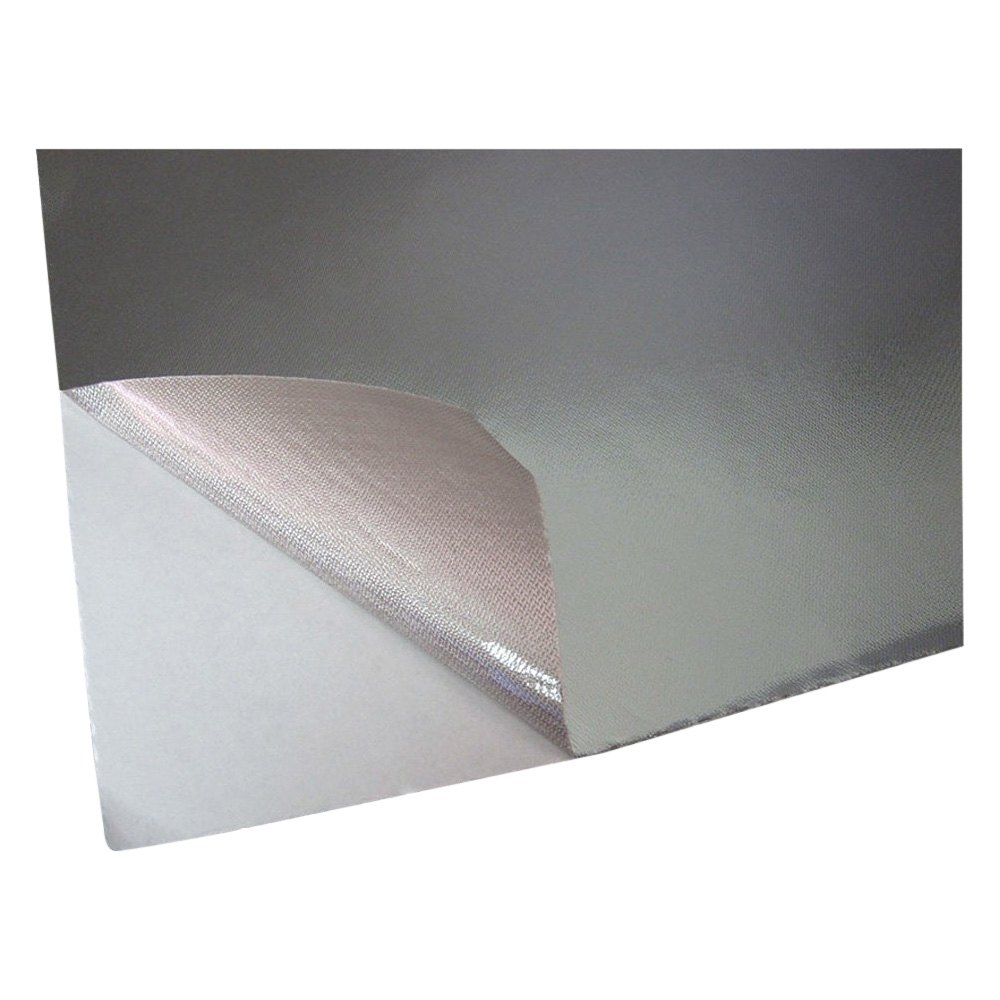Seçerken Yapışkan destekli alüminize ısı bariyeri Aracınız için, optimal termal koruma ve kurulum kolaylığı elde etmek için doğru kalınlığı seçmek çok önemlidir Isı yansıma verimliliği, esneklik ve boşluk kısıtlamaları arasındaki doğru denge, yalıtım çözümünüzün etkinliğini belirleyecektir Bu kılavuz, çeşitli araç uygulamalarında termal performans ve kurulum uyarlanabilirliği açısından farklı kalınlıkları (0 5mm ● 3mm) karşılaştırır
Alüminize edilmiş ısı bariyerleri, radyant ısıyı kritik bileşenlerden uzaklaştırarak, termal ıslatmayı azaltarak ve çevredeki parçaların ömrünü uzatarak çalışır Bariyerin kalınlığı verimliliğinde önemli bir rol oynar:
0 5mm ● 1mm: Ultra ince ve hafif olan bu aralık, minimum alan etkisi ile mükemmel yansıtıcılık sağlar En uygun:
Sınırlı boşluklu sıkı motor bölmesi alanları
Elektrik kablolama, yakıt hatları ve küçük hortumların ortam ısısından korunması
Karmaşık şekiller için sarılması kolay çözümler
1 5mm ● 2mm: Esneklik ve gelişmiş yalıtım arasında dengeli bir seçim, sunum:
Orta-ısınma bölgeleri için artan ısı direnci
Yapısal bütünlüğü korurken kavisli yüzeyler için iyi uyarlanabilirlik
Güvenlik duvarı yalıtım ve kaput altı uygulamaları için idealdir
2 5mm ● 3mm: Maksimum ısı direnci ve dayanıklılık, şunları için ideal hale getirir:
Turboşarj koruması ve egzoz sistemi yakınlığı gibi yüksek pozlama alanları
Büro altı paneller ve şanzıman tünelleri gibi maksimum yalıtım gerektiren büyük, düz yüzeyler
Uzun ömür ve sağlamlığın öncelikleri olduğu ağır hizmet uygulamaları
Daha kalın bariyerler üstün yalıtım sağlarken, daha az esnek olabilirler, bu da kurulumu sıkı veya karmaşık alanlarda zorlaştırır Doğru kalınlığı seçerken aşağıdaki faktörleri göz önünde bulundurun:
Sıkı boşluklar: Kompakt motor koyları (spor otomobiller, motosikletler) olan araçlar 0 5mm ● 1mm engeller, eğriler ve köşeler etrafına kolay kurulum sağlar
Ilımlı boşluk: Yolcu otomobilleri ve kapalı alana sahip performans araçları uyum sağlayabilir 1 5mm ● 2mm Koruma ve uyarlanabilirlik dengesi için engeller
Geniş alanlar ve ağır hizmet kullanımı: Kamyonlar, off-road araçları ve yüksek termal yüklere ve yeterli montaj alanına sahip yarış uygulamaları 2 5mm ● 3mm engeller
| Araç tipi | Önerilen kalınlık | Uygulama alanları |
| Kompakt arabalar | 0 5mm ● 1mm | Yakıt hatları, elektrik kabloları |
| Spor arabaları | 1mm ● 1 5mm | Güvenlik duvarı, alım koruması |
| Performans Arabaları | 1 5mm ● 2mm | Hood Liner, Turbo Isı Koruma |
| Arazi araçları | 2mm ● 2 5mm | Gövde altı paneller, egzoz koruması |
| Ağır hizmet tipi kamyonlar | 2 5mm ● 3mm | Şanzıman tünelleri, bölmeler |
| Motosiklet | 0 5mm ● 1mm | Motor kapakları, Fairings |
Seçerken Yapışkan destekli alüminize ısı bariyeri, sadece termal verimliliği değil, aynı zamanda kurulum kolaylığı, esneklik ve alan kısıtlamalarını da düşünün Uygulamanız sık ayarlamalar gerektiriyorsa, daha ince ve daha esnek bir malzeme tercih edin Aşırı ısıya maruz kalma için, maksimum yalıtım için daha kalın seçeneklere öncelik verin Her zaman optimal yapışma ve uzun ömür için uygun yüzey hazırlığını sağlayın
Uygun kalınlığı seçerek, kesintisiz ve dayanıklı bir kurulum sağlarken aracınızdaki ısı birikimini etkili bir şekilde yönetebilirsiniz.
